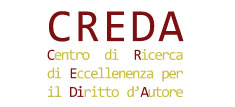di Giusella Finocchiaro e Laura Greco Sommario: 1. Premessa 2. Gli ostacoli; 2.1.…
Compensation for damages in the event of death, in the Italian Legal System
by Ilaria Garaci The discussion on the right to compensation for damages resulting from the death of a member of the family caused by the wrongful act of another has for many years divided, from multiple perspectives, both legal commentators and case law in Italy. In today’s paper, it is my intention to identify the main legal issues that form part of the current debate in Italy, and which has flared up following a recent ruling of the Italian Court of Cassation (Court of Cassation, 23 January 2014, n. 1361). The judgment, known as the “Scarano” decision after the Judge-Rapporteur – conflicts with prior long-standing case law and introduces the principle that damages for instantaneous loss of life, caused by injuries suffered as consequence of a car accident, give rise to a direct right of compensation in favour of the victim and consequently transferable to the heirs. Considering the conflict with prior, the Court of Cassation, in plenary session, has now been called on to take a position on this legal issue in order to provide a harmonized interpretation within the Court. A decision of the plenary court is expected soon. Having noted the above, it appears useful to briefly summarize the main questions before the Italian courts in relation to the recognition of damages resulting from death caused by tort: 1) A first set of questions regards the capacity to institute legal proceedings to request non-pecuniary damages by the relatives of the deceased victim. It is generally accepted that the so-called second-degree victims of a unlawful act, i.e. the relatives of the victim, have a legal right to recover non pecuniary damages suffered in their own personal sphere related to the death of a kinsman i.e. so-called “relative damages” (“Danni riflessi”). The prerequisite commonly accepted by legal commentators and by consolidated case law, consists in the prerogative of a qualified relationship with the victim that generally corresponds to the ordinary connection under a family affiliation, though this is as such not sufficient, since the relative is also required to demonstrate a particular de facto affective connection. In fact, the existence of a family affiliation under the legal framework is neither necessary nor sufficient. On the one hand, it is by now fully accepted that an “institutional” family affiliation is no longer required because de facto relations are able to establish intensive affective interaction and solidarity as well. On the other hand, it is not sufficient in view of the fact that the courts will assess, on a case by case basis, both the actual importance of the affective bond as well as the impact of the prejudice suffered by the primary victim on the relationship of the relative, to the extent of even jeopardizing its existence. In relation to the locus standi of the relatives not pertaining to the traditional nuclear family, i.e. grandparents, grandchildren, son-in-law, sister-in-law and so on, there exists conflicting positions in the case-law, related to prerequisite of the cohabitation. Recently the Court of Cassation stated that the members not belonging to the nuclear family, (grandparents, grandchildren, son-in-law, sister-in-law and so on), are entitled to bring proceedings for compensation for non-pecuniary damages suffered in their own sphere, if they can prove the existence of cohabitation with the victim. 2) In relation to pecuniary damages, the legal issues are relatively limited. Compensation for damages, under the Italian Civil Code (art. 1223), includes both the. costsactually incurred (e.g. health care expenses such as treatment and hospitalization costs of the victim, funeral expenses, value of the goods of the deceased victim destroyed during the unlawful act), as well as the lost future income (e.g. contributions, subsidies or other benefits which could have been available to the deceased person under the statutory rules or by family solidarity, victim’s future earnings until retirement, other expected services, protection, care and/or assistance for the survivors/beneficiaries). In this context, the relatives might encounter difficulties in providing evidence of the existence and the extent of the income and/or contributions that the deceased person would have received. 3) A third set of questions regards the more complex identification and quantification of non-pecuniary damages, suffered both by the first-degree victim of the wrongful act and possibly transferable to the heirs, under the profile iure hereditatis, as well as directly by the relatives with an autonomous right, iure proprio. The Italian statutory rules do not provide for a definition of non-pecuniary damages but provides for a right of compensation under art. 2059 of the Civil Code, with some limitations. This is not the place to analyze the broad interpretation of this article, which over time evolved up to including, besides damages arising from criminal or unlawful acts, any kind of prejudice caused by the impairment of inviolable personal rights recognized in the Constitution. Conversely, it seems important to underline that more recent court decisions have reconsidered the former principles which gave rise to a particularly complex unclear framework, resulting de facto in a unfair treatment between different victims of an unlawful event causing death, in particular, in respect of those damage profiles whose recognition is entrusted to the equitable evaluation of the single courts. The damages profiles which emerge from the case law can be summarized as follows: A) Among the damages suffered by deceased and possibly transferable to the heirs: a) biological damages suffered by the deceased, which can be recognized, as set forth below, only in very limited cases and solely if there was a noteworthy lapse of time between the events of the wrongful act and the death; b) moral damages suffered by the victim where the latter was aware of the catastrophic consequences of the wrongful event leading to the loss of his/her own life, i.e. catastrophic damages; c) damages for loss of life, i.e. thanatological damages, recognized to date only occasionally by the lower Italian Courts, mostly like obiter dictum, and by a part of legal commentators. B) Among the damages suffered by relatives, under a profile iure proprio: a) biological damages, in case the distress from the loss of someone close has evolved into a “temporary or permanent injury to a person’s physical and mental integrity which can be identified through a medico-legal assessment and which has a negative impact on the activities of daily life and on the dynamic and interpersonal aspects of the life of the injured party, regardless of any repercussions on his/her capacity to produce income”. The same concept is applied in the Italian Code of Private Insurance (articles 138 ) and it is commonly accepted that this has a general extension; b) moral damages, intended as a state of anxiety or psychological distress as result of the loss of a relative; c) the (controversial) existential damages, mostly correlated to the damages due to the loss of a parental relationship which, according to recent changes in the case law, might exist when the relative of the deceased victim can establish that, upon the harmful event, his/her ordinary living habits were seriously disturbed to the point of being compelled to change lifestyle. Having introduced the main legal issues related to damages for wrongful death, I would like now to focus on the ongoing debate concerning the controversial legal figure of thanatological damages. Compensation for this type of damage has systematically been rejected in prior decisions of the Italian Court of Cassation as well as by the Constitutional Court in 1994. The main reasons rejecting the right of compensation to damages for instantaneous loss of life include: 1) The application of the civil liability regime requires not only a prejudice to a personal legal position but also a suffered loss connected to this prejudice. A situation of instantaneous death impedes, per se, that the wrongful event can produce an actual loss for the offended person who is no longer in life. 2) Health and life belong to two substantially different legal categories, so that compensatory treatment based on biological damage related to damage to health cannot be applied to damage for loss of life. For this reason, a compensatory right exists only in the event of damage to health prolonged over time. 3) An heir cannot inherit indirectly something that was never an established right for the person who lost his life, i.e. the de cujus, considering that the loss of life involves the loss of legal capacity. 4) The function of providing a remedy and comfort related to the compensatory regime of a wrongful act cannot be applied in case of a death since this would be regarded as punitive which is not admitted under the civil liability regime. On the other hand, some influential legal commentators, in particular Nicolò Lipari, have argued in favor of the right to compensation including in cases of instantaneous loss of life, both on the assumption that a death represents the maximum impairment possible to an individual’s rights to good health and, in such terms, should give rise to a right to damages as well as, from a more visionary perspective, on the assumption that the destruction of a human life not only constitutes evident harm to the victim but also an “offense to his core family and results in a “very high cost to the society”. This interesting viewpoint qualifies life, once destroyed, as a good to be defended not only in the interest of the person and his/her family, but also in the interest of the collectivity. More generally, it is interesting to note that for quite some time, there have been some remarkable court decisions that advocate the idea of a wider social justice by introducing solutions capable of compensating the lack of restitution of a loss of live and, consequently, of balancing the well known contradictory aphorism “it is cheaper to kill a person than to wound him”. Hence, by establishing that damages for death fall outside the succession system, the courts have preferred to give a major weight to the prejudice of the parental relationship; Additionally, in order to validate the transferability of damages linked to the death of the victim, the case law has, on several occasions, considered that “terminal biological damages” are capable of being compensated where death was caused by the injuries suffered and that between the occurrence of such injuries, which affected the psychological and physical integrity of the deceased victim, and death, there elapsed a “considerable period of time”. The main legal questions in the case law are mostly focused on the analysis of the adequate time period required to give rise to a lawful right to compensation. This has resulted in an uncertain and vague system also considering that the judge must necessarily make a case by case evaluation, under equitable principles, with specific regard to the assessment of the daily psychophysical damages suffered and that these were the cause of death. Other examples are the so-called “catastrophic damages” or terminal moral damages, consisting of the sufferance of the victim when aware of the future fatal outcome. The right to compensation has also been recognized by the courts in the event that the victim survives, even only briefly, the injury and on the basis that the victim’s suffering was caused by the full awareness of the “tragic consequences of the injuries”. As a result, there is no eligible right for compensation if the harmful event is followed by immediate coma and the victim was not conscious prior to death. This approach has been criticized on the basis that it is inconsistent because it would entail that a gravely injured person who went immediately into coma and died soon afterwards has no right to compensation whereas a person remaining conscious and dying soon afterwards, would have such a right. Recognition of “catastrophic damages” might even qualify as unfair treatment if we consider a recent decision of the Court of Cassation of 28 January 2013, no. 1871 related to the Ustica Air Crash, that denied to the relatives of the victims the right to be compensated for the prejudice of the right to life suffered by the passengers, for the reasons that a deceased victim can not possibly acquire a right deriving from his/her own death and, on the other hand, given the lack of evidence of the existence of a state of consciousness for the victim in the brief period between the wrongful event and death”. In this context, the recent “Scarano” decision of the Court of Cassation comes to a completely different solution, in that it considers the above elements of damage (i.e. terminal biological damage catastrophic damage) as mere artificial loopholes to overcome the absence of a right to compensation for damages due to instantaneous loss of life. The facts of the case can be summarized as follows: A women, married with two children, was involved in an motor vehicle accident and dies shortly after. Her husband, also present during the accident, survives despite his serious injuries but evidently cannot stand the grief of the death of his wife and, after two years, commits suicide. The relatives of the wife and husband (i.e. the children, the mother and sister of the deceased women) initiate legal proceedings against the author of the car incident by claiming compensation for non-pecuniary damages suffered both under a “iure proprio” and a “iure hereditatis” profile. The damages claim, iure hereditatis, was rejected in first instance and on appeal on the ground that the time between the incident and the death (approximately three and a half hours) was insufficient to grant the victim rights transferable to her heir. The appeal decision was challenged before the Court of Cassation which overrules the decisions of the lower courts, and recognizes the principle of the immediate acquisition by the victim of rights to compensation with respect her loss of life and, as a consequence, the possibility to transfer this to the heirs pro quota. In the grounds of the decision, the Court reasoned that the lack of the right to compensation for loss of a person’s own life constitutes a response that “does not correspond to the commonly-held feeling in this given historical moment”, since “the loss of life cannot lack civil protection”. Based on this statement, the Court accepted the right to compensation per se for the damages of (instantaneous) loss of life, i.e. thanatological damages. These damages are distinct from damages for loss of health and therefore differ from t”erminal biological damages” and “terminal (or “catastrophal”) moral damages” of the deceased victim. Indeed, according to the High Court, the “loss involves compensation regardless of the consciousness of the victim, without the need to consider the requirements of both the persistence of life for a considerable period of time after the prejudice, as well as the criterion of the intensity of the suffering caused by the awareness of the inevitable forthcoming end of life”. The High Court goes on to reason that the right to compensation for loss of life is acquired by the victim immediately at the time of fatal accident and is consequently transferable to the heirs. This motivation has introduced an exception to the principle of the impossibility to compensate damages for the mere occurrence of a damaging event, whereas such right exists to compensate the consequences of such event, “considering that the death event has as a consequence, the loss of not only something but of everything; not only one of many goods but the loss of the supreme good of life”. The right to compensation is acquired before the time of death and, according to the Court, such mechanism safeguards the principle of the remedial or relief function of compensation, considering that “the victim’s credit related to the loss of his/her own life due to the wrongful act of another, increases his/her estate”. As a result, as stated by the Court, the punitive function is not recognized, as this would be contrary to our civil liability regime. The Scarano ruling tackles another important aspect related to the criteria for quantifying the non pecuniary damages and those also connected to the (instantaneous) death. There emerge from the decision a certain suspicion towards the tabular system. It is to be noted that the payment method in Italy for compensation of damages to persons is mainly based on a tabular system developed in various tribunals to ensure a high level of certainty, equal treatment , even if the final amount of compensation is still determined case by case. The tables prepared by the Tribunal of Milan were given particular importance by a recent decision of the Court of Cassation (Cass. Sez. I Civ., decision no. 1781 of 8 February 2012), that regarded them as a reliable guideline for the quantification of damages throughout Italy, as they are believed to be the most appropriate guide to guarantee of an equitable compensation of motor vehicle incident damages and, more in general, of the safeguarding of the principle of equal treatment. The Scarano ruling considers however that at the current state of art the tables of Milan are not always able to ensure an adequate personalization of the damage. Since the tabular system do not provide to damages for loss of life (and we underline the fundamental distinction between life damages and health damages) in the Scarano ruling it is stated that it is necessary to identify a particular and specific quantification system that means that the courts on the merits have a discretional right to identify the proper evaluation criteria that allow to come to an equitable compensation, considering the age of the victim, health conditions, future life expectations, the occupation and the personal and familiar conditions of the victims. What emerges from the decision is a system that fosters equity rather than certainty and predictability. We can share at this regard the reservations by the legal commentators : by conferring to each court the task to determine an equitable compensation on a case by case basis, even if only regarding the thanatological damages, we would alter the fundamental need of certainty. The uncertainty, that would lead to a higher level of compensation, is likely to involve an increase in insurance premiums to the prejudice of the economically weaker sectors of society. It is useful to recall that the predictability and certainty of the possible damage types is considered crucial for the proper administration of compensation by insurance companies. So, even if the thanatological damages are recognize in our system, it would be difficult not to include them in a table system, that can represent an useful instrument for insurance companies for this purpose, provided that it is structured to ensure an adequate level of personalization. As a general conclusion, the Scarano Ruling remains an interesting, though controversial, decision considering its clear ambition for a higher “social justice”, but it is doubtful that it can resist the verification by the Plenary Court. The main obstacle is, in my opinion, related to the extinction of the legal capacity of the victim: indeed as long as the person is alive, although agonizing, there is no prejudice to his life but to his health. Furthermore, once the victim passes away, he can no longer acquire any right since the moment of deathcorrespond to the moment of the loss of legal capacity. Hence, the damages for death apparently have a punitive effect, which is not in line with the principles adopted by the Italian civil liability system. The issue related to the recognition of damages for loss of live raises also some important philosophical and ethical questions. Is it really possible to value life? In setting the level of compensation for a lost life, does this not involve an unfair treatment on the basis of the specific social background of the victims, considering for example their jobs, personal life and familiar conditions? Hence, is it correct to value a blessed life (e.g. successful business, a large family, a rewarding social life) also more favorably at the time of death in respect to a person who was less fortunate? Intervento nell’ambito del XIV Congresso mondiale AIDA 2014 (Working part: Motor Insurance) 1 ottobre 2014








